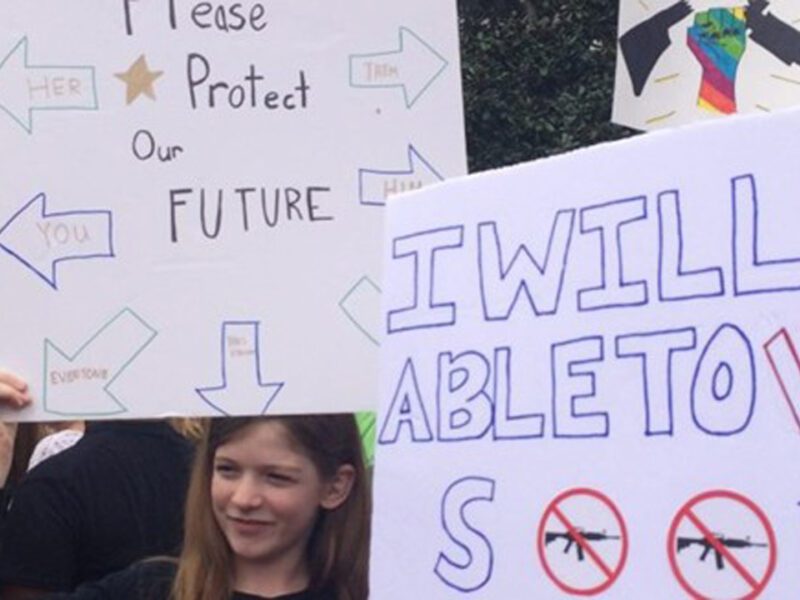Report: Nearly 500 Schools Underenrolled and Chronically Underperforming
The 74 Million |By Marianna McMurdock |
National analysis reveals enrollment declines are far from random, urging district leaders to plan for family re-engagement or face possible closures.
Low performing schools are twice as likely to have lost substantial numbers of students – with nearly 500 losing 20% or more since the pandemic, marking them potential candidates for closures, a new national report has revealed.
Analysis released yesterday by the Fordham Institute put forth a list of close to 500 strained schools as a “wake up call” for districts to plan interventions such as family engagement, high dosage tutoring and address specific community concerns before they “find themselves pushed against a wall” and forced to close schools, said author Sofoklis Goulas, a fellow with the Brookings Institution who built on his prior enrollment research in this latest study with Fordham.
The study cautioned districts against using the list as a strict guide or framing it as a “bad schools list,” rather, as a starting point for interventions and discussions.
School closures are often protested and can lead to distrust in the system, particularly when plans target campuses, most often elementary schools, with predominantly Black and brown children.
The study is the first to correlate school performance with enrollment declines, revealing the drops are far from random: Among schools identified as chronically underperforming by their states, those in high-poverty, urban areas, and charter schools lost the highest proportions of students, those “grappling with systemic challenges and resource constraints,” the report stated.
Goulas’s latest findings suggest family dissatisfaction with schools is outpacing other known drivers such as birth rates, which dropped 14% nationally in the last decade, or interstate migration.
“Families are essentially rejecting schools that are not serving them well,” Goulas told The 74, adding solutions won’t look the same across all districts – some will be forced to close schools while others may not. He urged leaders to address, “the core problem, which is the disengagement, the sentiment of dissatisfaction from traditional public schools.”
California and New York, hosting the nation’s largest school systems by population, both have about 40 schools on the list of 500. Overall, roughly 5,100 of the nation’s 98,000 schools, or one in 12, lost substantial numbers of students.
Among 41 California schools which make the list, five are underperforming Los Angeles Unified schools which have lost between 22 and 55% of their enrollment as of 2022-23. Pio Pico Middle School, for instance, lost 261 students since 2019, more than the 212 who remain enrolled.
Alongside Illinois and New York, California experienced one of the largest population exoduses heading into 2023. Los Angeles Unified, the second largest district in the country, has established a new office to better support schools’ recruitment and retention.
But, as spokesperson for LAUSD told The 74 by email, “there are stark realities confronting Los Angeles Unified that transcend what a school system can address such as cost of living, job prospects and statewide economic challenges that are forcing families to leave the city and state.”
“Our students represent some of the most fragile in the city and are particularly impacted by financial pressures… School closures or consolidations are a measure of last resort which have little to do with finances and more with the type of offerings schools are able to provide.”
In Washington, a multimillion dollar program to re-engage students and families has been credited with bringing back 2,000 kids. Given the financial strain the declines are already placing on districts across the country, some like Seattle and San Antonio have already announced or enacted closure plans.

When Oakland Unified School District put forth a plan to merge or close 11 of its 80 schools in 2022, two educators embarked on a hunger strike for 18 days.
Researchers relied on a federal guideline to determine which schools are low performing, using states’ required Comprehensive Support and Improvement schools lists, those with the lowest performance and graduation rates. They caution this metric is not completely reliable, given the variation from state to state, with some updating every year while others only every three years. The CSI lists don’t often account for year-to-year academic growth either, which may be strong and indicate a thriving school community.
Researchers also did not determine whether students attending these schools have nearby high-quality alternatives in the event their schools close.
“This is an exposition of the situation… There’s no horizontal solution across the board that we need,” said Goulas. “District superintendents need to find the solution that meets the needs of their community,” he said, adding student demographics, year-to-year growth, transportation and strength of alternatives are some measures that cannot get lost in closure conversations.
Historically, children whose schools close fare worse academically and graduate high school and college at lower rates. At the same time, when students are moved into larger schools, it means more financial resources, and with them, more extracurriculars or specialty course offerings.
The best of the worst case scenario is to be honest with families about consolidations or closures and provide 5- and 10-year plans, former Chicago schools chief told The 74 earlier this year.
“I hope that the research that people like me provide can help the districts plan ahead,” Goulas said, “because the less runway you have to make a plan and be prepared, the harsher the decisions you end up making.”






